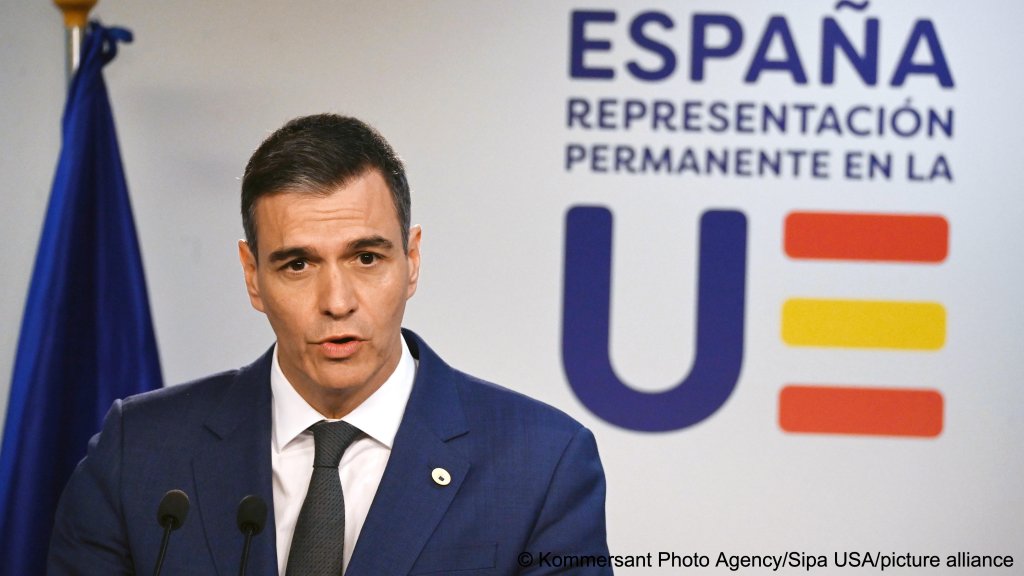Foreign-born nationals account for 18.1 percent of Spain's total population. Spain has emerged as an outlier, championing immigration not only from a humanitarian perspective but as an economic growth strategy.
For years, Spain languished in the economic doldrums of the post-2008 financial crisis. Today, Spain is leading the pack in the European Union with glowing economic indicators that include an annual GDP growth of over three percent, edging out its neighbors that had typically dominated the EU economic scene. Analysts say that central to Spain’s economic growth strategy is a liberal immigration policy.
The British weekly magazine The Economist put the spotlight on Spain as the best-performing economy in the EU in 2024 first in its ranking that classifies the economies of the Organization for Economic Cooperation and Development (OECD). The Economist cited Spain's annual GDP growth saying it was "driven by a robust labor market and high levels of immigration, which mechanically boost economic production." The study collected and measured five macroeconomic and financial indicators: GDP, stock market performance, inflation, unemployment, and fiscal balances of 37 countries.
The Economist's study marked Spain's consistent and sustained economic growth. Data from the statistical office showed that the county's GDP overall growth in 2023 was roughly two percent, outpacing the growth in the Eurozone which lagged at about 0.7 percent.
Immigration as an economic growth strategy
In an address to Parliament last October, Spain's Prime Minister Pedro Sánchez outlined the rationale behind immigration as an economic growth strategy.
"[Immigration is] not just a question of humanitarianism..., it's also necessary for the prosperity of our economy and the sustainability of the welfare state...The key is in managing it well," Sánchez said.

Beyond Sanchez's announcement, Spain has also implemented a series of measures to facilitate immigration and integration. To plug in the need for about 250,000 to 300,000 tax-paying foreign workers a year to sustain Spain's welfare state and offset the negative impact of an aging population, Spain announced a mass regularization program. The residency status of about 300,000 undocumented migrants will be regularized between now and 2027. Spain has an estimated 600,000 undocumented migrants, one of the highest rates in the EU.
Spain carried out similar immigration regularization programs between 1986 and 2005. Through six mass-regularization processes, legal residency status was given to about 1.2 million immigrants. According to a study by the Migration Policy Institute, Spanish institutions and major trade unions agreed that "an increasing immigrant population with irregular status was more problematic... those constrained to work in the informal economy would not pay income taxes or contribute to social security programs."
Read AlsoSpain: An outlier opposing asylum centers outside the EU
More foreign-born nationals
Other bureaucratic measures underline the government's strategy to facilitate immigration and employment. Specifically, Spain has made access to the job market easier for foreign students, has streamlined the procedure for certifying occupations that are affected by chronic labor shortages, and extended temporary work-related residence permits from two years to four.
Government data indicates that as of January 2024, Spain's foreign-born population accounted for 18.1 percent of the total population. About 42 percent of all foreign-born people are between the ages of 25-44, indicating a large demographic eligible to participate in the workforce.

Public sentiment appears to be in step with government policy. In its latest publication, data aggregator, Statistica reported that nearly 75 percent of young people in Spain thought that immigrants' customs must be respected unless they clash with the nation's constitution. Separately, 23.8 percent of those surveyed thought that there were too many immigrants in Spain, while eight percent of young people agreed completely with the statement "the presence of immigrants has increased delinquency".
Read AlsoSpain: Immigrant labor bridging job market gaps
Populating an 'empty Spain'
Foreign-born nationals are also filling areas of Spain that have become demographically "empty." This, reported the French news agency Agence France Presse (AFP) is bringing a different kind of boost—one that is filled with the laughter of schoolchildren and a local economy that is slowly coming back to life.
Over 1,000 people have passed through the refugee center in Burbáguena in northeastern Spain since it opened its doors in 2021, AFP reported.
Currently, the refugee center is home to people from Afghanistan, Burkina Faso, Colombia, Mali, Niger, Peru, Senegal, Ukraine, and Venezuela, who are waiting for their asylum claims to be processed. About a quarter of the asylum seekers are school-age children, which the Burbáguena residents have found "delightful."
About 100 people reportedly decided to stay in the village once their request for residency was granted. The new residents pushed Burbáguena's population to above 350, including 25 children, up from just a couple.
A surge in economic activity has followed the village’s growing population, reviving daily essentials like a school bus service, and pharmacies and bakeries open nearly daily.
Accem, a Spanish nonprofit aiding refugees and migrants, chose Burbáguena for its center because "cities are becoming less and less hospitable," regional manager Julia María Ortega García told AFP.
Decades of rural-to-urban migration and a low birth rate have left much of Spain’s interior aging and sparsely populated, earning it the moniker "empty Spain."
The province’s population of 135,000 is fewer than the 167,000 asylum seekers Spain received in 2024, according to the United Nations High Commissioner for Refugees.
